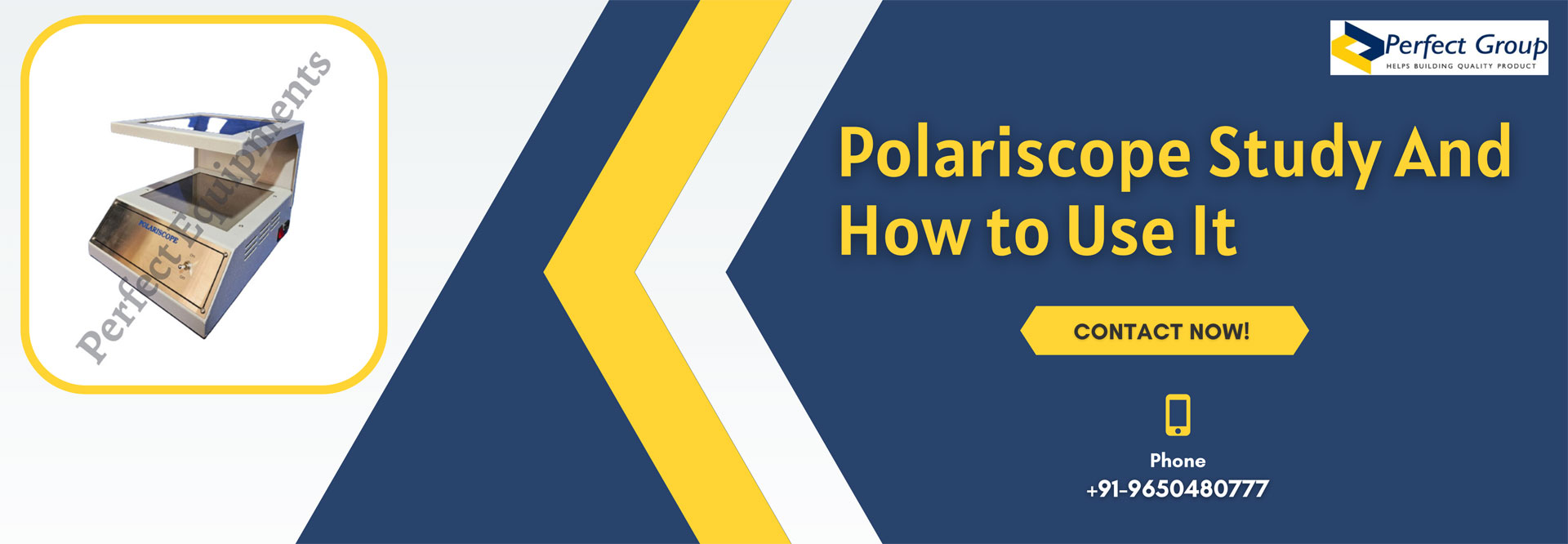Polariscope is an extremely important tool in the industry of materials testing and quality control, and it is used in a variety of sectors that range from manufacturing to gemology. It's a device used to analyze the optical properties of transparent and translucent materials. Perfect Group India, a well-known scientific instrument manufacturer, has made valuable contributions to the sector by providing high-quality instruments and related accessories. Let's look at the basics of this instrument's concepts of research and explore how it can be used in many sectors, and give a full tutorial on how to make use of this valuable instrument properly.
Understanding the Polariscope
A
Polariscope is an instrument that is used to investigate the distribution of stress within transparent materials such as glass, polymers, and crystals. It is based on the theory of birefringence, which is a property in which a material has unique refractive values along different planes due to its internal pressure. When polarized light passes through such materials, it splits into two beams, each being unique because it bounces in a different direction. The relationship between each of these beams shows important information about the stress condition of the material.
Importance of Polariscope Research
Quality Control in Glass Manufacturing:
Its testing is especially important in the glass sector. It helps in identifying the presence of stress patterns and strains in glass goods, which if not handled, can lead to imperfections or even structural breakdowns. This equipment from Perfect Group India is developed in order to make sure that glass manufacturers provide high-quality, stress-free goods.
Non-Destructive Testing:
Polariscope study is a non-destructive testing method, making it an important instrument in sectors where the quality of material is important. It is used to check the durability of optical lenses, vehicle windshields, and even museum-class window displays without causing any harm.
Research and Development:
Polariscope studies are used by researchers and material scientists to gain information about the behavior of different types of materials under stress. This understanding is important for developing stronger, more durable materials for use in aircraft, construction, and other high-stress areas.
Perfect Group India's Contribution to Polariscope Study
Perfect Group India has made amazing advancements in the field of material testing, and their Advance equipment is no surprise. Here are some key qualities that define their study solutions:
State-of-the-Art Technology:
Perfect Group India's equipment is constantly updated to keep up with the most recent advances in technology. Users will have access to the latest tools for stress analysis and quality control as a result of this.
Customization Options:
The company offers a variety of models, each created to meet the demands of a specific industry. Whether it's the glass industry, research institutions, or any other sector, Perfect Group India provides tailored solutions to meet individual requirements.
Expert Training and Support:
Perfect Group India not only provides top-notch equipment but also offers full assistance and training to users. This ensures that operators can take full advantage of the capability of their equipment and properly analyze data.
How to Use a Polariscope
Using this instrument skill fully requires an organized approach as well as an in-depth knowledge of the device. Here is a step-by-step guide on how to use this instrument for stress analysis:
Step 1: Set Up the instrument
• Ensure that it is placed on a stable and level surface.
• Align the light source properly, ensuring it is perpendicular to the viewing area.
• Adjust the gadget so you can guarantee accurate results.
Step 2: Prepare the Sample
• Carefully clean the sample in order to remove any dirt or impurities that might cause problems with the results of the test.
• If required, cut or shape the sample to the suitable dimensions.
Step 3: Polarize the Light
• Turn on the light source and adjust the polarizer and analyzer to obtain the best possible contrast.
• This step ensures that only polarized light passes through the sample.
Step 4: Insert the Sample
• Place the prepared sample between the polarizer and analyzer.
• Observe the sample through the eyepiece or camera attached to the Polariscope.
Step 5: Analyze the Results
• Examine the sample for colorful interference patterns known as isochromatics and isoclinics.
• These patterns reveal information about the stress distribution within the material.
• Record and document the results for further analysis or quality control purposes.
Step 6: The Analysis
• Analysis of these patterns of interference can be difficult and may need materials science knowledge.
• Seek advice from professionals or consult the right sources to correctly understand the data.
Step 7: Quality Control
• Based on the analysis, take necessary actions to address any stress-related issues in the material.
• In an industrial environment, this could be as simple as removing faulty items or changing manufacturing procedures.
Conclusion
The contributions of Perfect Group India to the field of materials testing show the company's dedication to innovation and quality. This optical instrument is necessary for businesses which include glass manufacture for research and development because it examines stress distribution and ensures the quality of transparent materials. Perfect Group India has not only offered innovative equipment but also armed users with the knowledge and skills to make educated decisions about material durability and quality through the latest technology, professional training, and support. As businesses grow and require better quality control standards, the role of Polariscope studies, supported by organizations such as Perfect Group India, becomes increasingly important in ensuring the safety and reliability of goods and materials in a wide range of industries.
